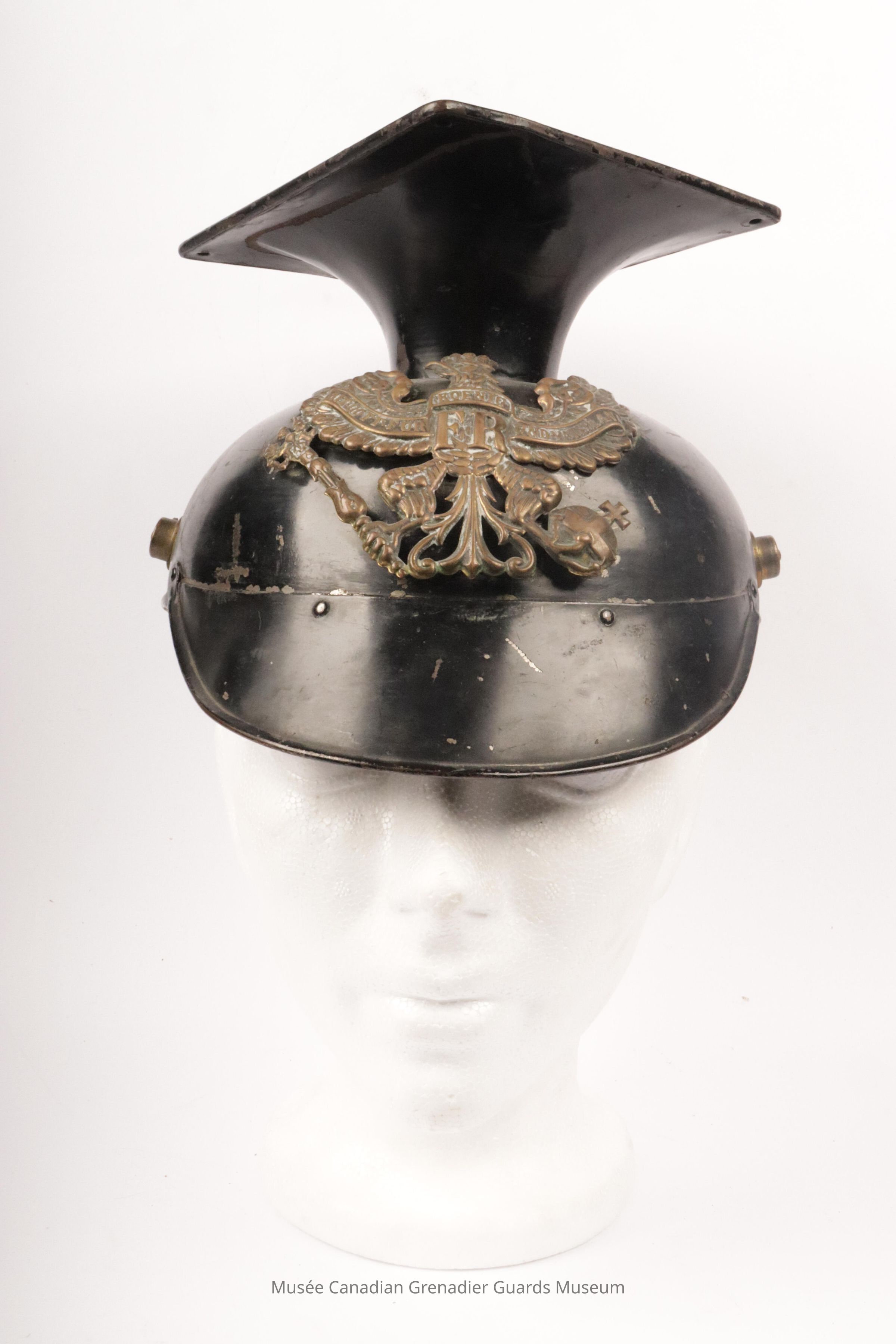Context
ORIGINS OF THE TSCHAPKA (Czapka):
The Ulanen (Lancers) Tschapka with its distinctive square top first appeared in 1808 when Prussia introduced Ulanen (Lancer) Regiments to emulate the Polish lancers as did many nations; especially after the Polish Lancer's performance at Waterloo in 1815.
The M1843 Tschapka was a tall helmet with a squared top which was secured with gilt chinscales. The neck of the upper flat portion on the Tschapka (called a "mortar board" by English collectors) was permanently covered with a colored cloth Paraderabatte (parade rabatte). The Paraderabatten colors were specific to each Regiment but were trimmed in white for Mannschaften (Other Ranks) and silver bullion for officers. The Fangschnur (securing cord) were attached to the top of the Tschapka with a toggle for Mannschaften and a hook for officer and private purchase.Name/Title
Unknown
